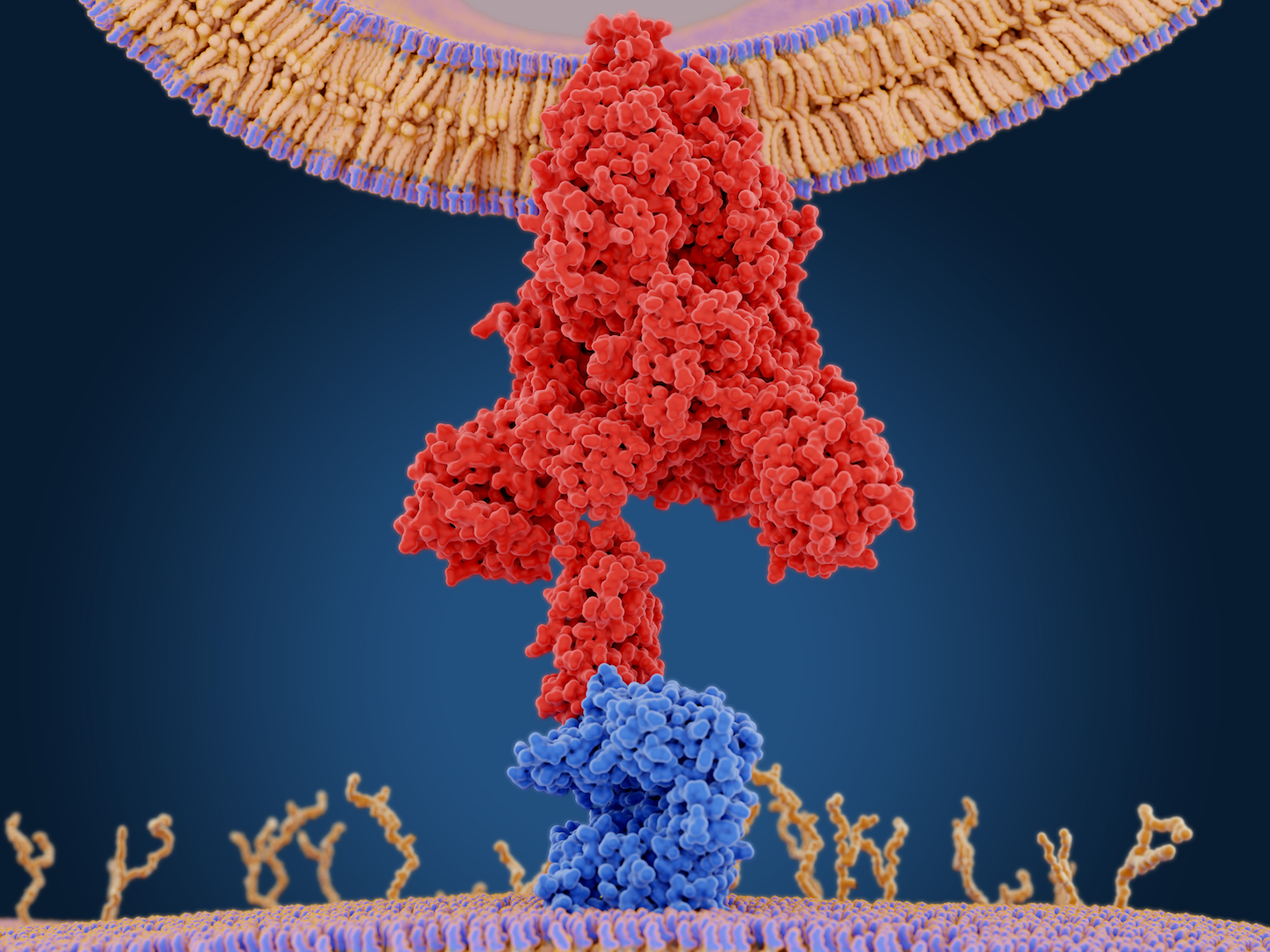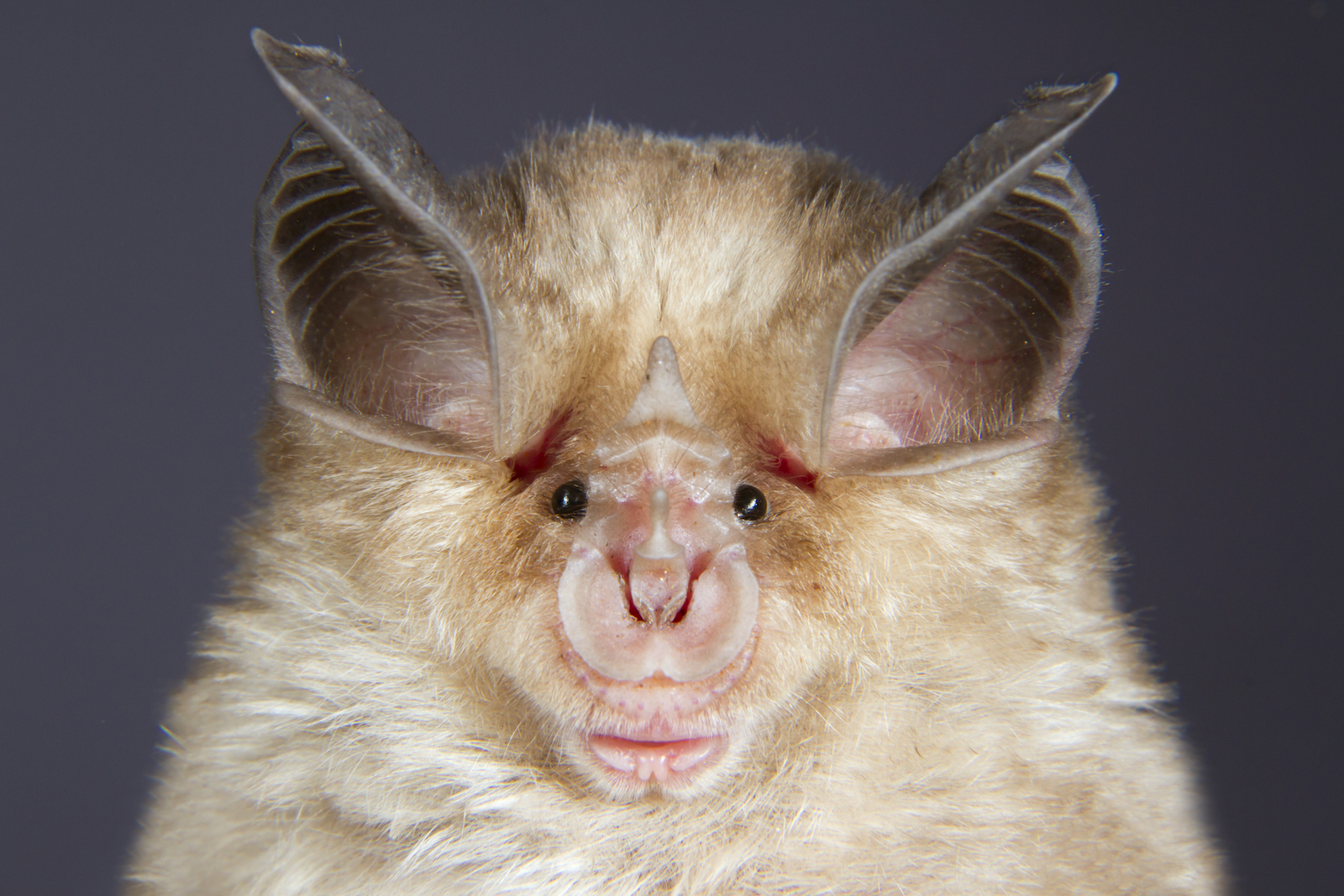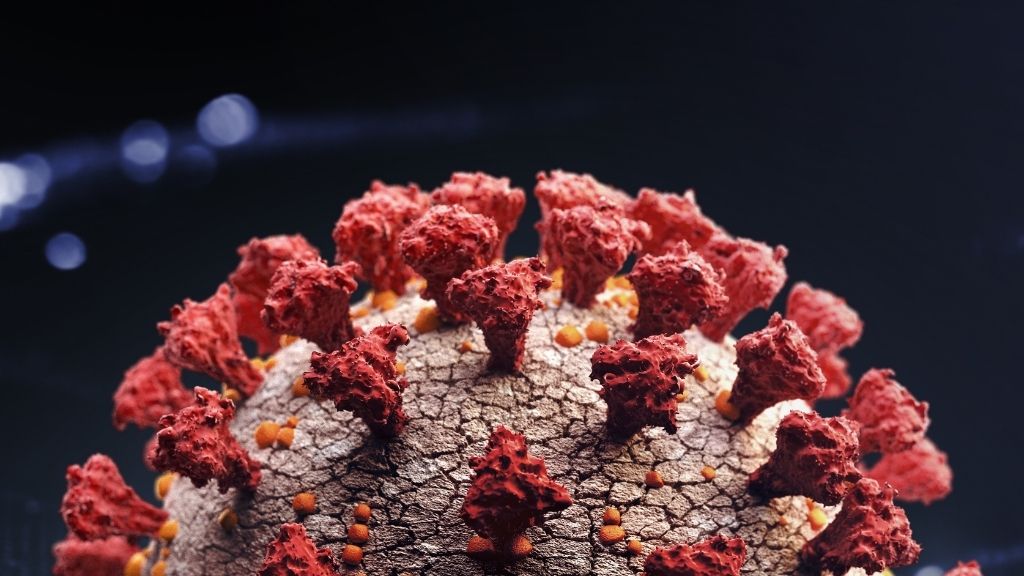What is a coronavirus?
Coronaviruses, including SARS-CoV-2, belong to a large family of viruses.

SARS-CoV-2, the virus that causes COVID-19, may be the most famous coronavirus, but it certainly isn't the only one. The novel coronavirus is just one member of a large family of viruses that can infect mammals, such as humans, cows, pigs and dogs; as well as birds, such as chickens, according to a 2020 review in the journal Frontiers in Veterinary Science.
In addition to the COVID-19 pandemic, several other major disease outbreaks have been driven by coronaviruses, including the severe acute respiratory syndrome (SARS) epidemic of 2002-2003 and the Middle East respiratory syndrome (MERS) outbreak in South Korea in 2015.
While the coronaviruses behind SARS, MERS and COVID-19 can trigger severe disease in humans, the other coronaviruses that infect people typically cause mild to moderate respiratory infections, like the common cold.
How coronaviruses infect cells

All coronaviruses sport spiky projections, called spike proteins, on their outer surfaces; these spikes resemble the points of a crown, or "corona" in Latin, according to the Centers for Disease Control and Prevention (CDC). Seven known coronaviruses can infect humans, including the novel coronavirus SARS-CoV-2, which was first identified in late 2019. (For this reason, the disease the virus causes was named "coronavirus disease 2019," or COVID-19, for short.)
Beneath a coronavirus's pronged exterior lies a round core shrouded in proteins and a "greasy" membrane, Jan Carette, an associate professor of microbiology and immunology at Stanford University School of Medicine, told Live Science in an email. The core contains genetic material called RNA that the virus can inject into vulnerable cells to infect them.
Related: 14 coronavirus myths busted by science
Spike proteins extend from within the core to the viral surface and allow the virus to "recognize and latch onto" specific cells in the body, Carette said. For example, the spike proteins on SARS-CoV-2 plug into a receptor on human cells called ACE2 to jump-start infection in those cells.
Get the world’s most fascinating discoveries delivered straight to your inbox.
"When the spike engages its receptor [on a host cell], a cascade is triggered, resulting in the merger of the virus with the cell," Carette said. This merger allows the virus to release its genetic material and hijack the cell's internal machinery. "Once this happens, the virus sheds its coat and turns the cell into a factory that starts churning out new viruses," Carette said.
Common-cold coronaviruses

The four human coronaviruses that can cause the common cold — named 229E, NL63, OC43 and HKU1 — did not jump from animals to humans but rather utilize humans as their natural hosts, according to the CDC. By comparison, the highly pathogenic viruses SARS-CoV, MERS-CoV and SARS-CoV-2 all initially passed from animals to humans.
The cold-causing coronaviruses "have presumably evolved to maximize spread amongst the population rather than pathogenicity," meaning the viruses may opt to maximize their spread rather than harm their human host, Carette said. This may partially explain why coronaviruses that are transmitted from animals seem to cause more-severe diseases in humans, but the idea remains speculative, he added.
The four common-cold coronaviruses can cause symptoms such as a runny nose, headache, cough, sore throat and fever, according to the CDC. That said, in some people, including those with cardiopulmonary disease or a weakened immune system, the viral infection can progress to a more severe lower-respiratory infection, such as pneumonia or bronchitis.
Related: Going viral: 6 new findings about viruses
SARS-CoV
The earliest known human infection with SARS-CoV, the virus that causes SARS, happened in November 2002 in the Guangdong province in southern China, according to the CDC. The virus then began to spread within and beyond China, and in March 2003, the World Health Organization (WHO) issued an alert about a severe form of pneumonia that was affecting hundreds of people in China, Vietnam and Hong Kong.
Within months, SARS-CoV had spread to 26 countries on five continents, infected more than 8,000 people and caused 774 deaths, according to a 2003 review in The New England Journal of Medicine.
The virus killed roughly 10% of the people it infected, and people over age 65 were at the highest risk of dying from the infection, according to the U.K.'s National Health Service. The SARS pandemic ended in July 2003, though a few cases cropped up in 2004, most connected to a medical lab in China where people were studying the virus, but no new cases have been reported since then.
SARS-CoV spread primarily through respiratory droplets that infected people expelled when they breathed, coughed or sneezed. The viral particles in these droplets could cause infection when they made contact with mucous membranes of the mouth, nose or eyes of healthy individuals, according to the CDC. Symptoms of a SARS infection included fever higher than 100.4 degrees Fahrenheit (38.0 degrees Celsius), headache, body aches, dry cough, pneumonia and sometimes diarrhea.
Related: 11 (sometimes) deadly diseases that hopped across species
Evidence suggests that the precursors to SARS-CoV jumped from Chinese horseshoe bats (Rhinolophus) to small, nocturnal mammals called masked palm civets (Paguma larvata) before infecting humans, according to a 2010 report in the journal Infectious Disease Clinics of North America.

MERS-CoV
The earliest known human infections with MERS-CoV, the virus that causes MERS, occurred in Jordan in April 2012, according to the CDC; that's based on retrospective investigations that took place after the virus had been identified. The very first reports of the disease actually came from health officials in Saudi Arabia, when cases of the infection cropped up in the country in September 2012.
Since 2012, MERS cases have been reported in 27 countries, according to the WHO. In total, about 80% of those cases were reported by Saudi Arabia. Cases identified beyond the Middle East have occurred mostly in people who contracted MERS while visiting the region and then traveled elsewhere, although on some occasions, sizable MERS outbreaks have occurred outside the Middle East.
For example, the largest known MERS outbreak that took place outside the Arabian Peninsula happened in South Korea in 2015, in which 186 people caught the disease and, of those, 38 died, according to a 2018 report in The Korean Journal of Internal Medicine. Patient zero was a 68-year-old Korean man returning home after a trip to the Middle East. The infection then spread within the hospital where the patient was treated, and on to more than a dozen other clinics and hospitals as infected patients were moved between facilities. The outbreak lasted about two months and ended in July 2015.
MERS can be asymptomatic, meaning it causes no symptoms of illness, but when people develop symptoms, they range from mild respiratory symptoms to severe acute respiratory disease and death, according to the WHO. Symptoms of the infection often include fever, cough, shortness of breath and pneumonia, and more rarely, gastrointestinal symptoms, such as diarrhea, have been reported.
Related: The 9 deadliest viruses on Earth
"The virus appears to cause more severe disease in older people, people with weakened immune systems, and those with chronic diseases such as renal disease, cancer, chronic lung disease and diabetes," according to the WHO.
An estimated 3 to 4 of every 10 people infected die from MERS, according to the CDC. That said, this may be an overestimate of the case fatality rate, as mild cases of the disease may not be reported as reliably as severe cases, according to the WHO.
Studies suggest that people catch the virus that causes MERS through contact with infected dromedary camels (Camelus dromedarius); evidence suggests that the virus originally jumped from bats to camels before infecting humans, according to the WHO.
The virus does not pass easily from person to person, although human-to-human transmission has occasionally been reported among family members, patients and health care workers, according to the WHO. "No sustained human-to-human transmission has been documented anywhere in the world," the WHO says.
SARS-CoV-2, the novel coronavirus

SARS-CoV-2, the virus that causes COVID-19, was first identified as a coronavirus in January 2020, after clusters of unexplained pneumonia cases had been reported in China the month prior. It's unclear exactly when the virus first started infecting people, although some studies hint that the pathogen may have emerged in humans as early as October 2019, Live Science previously reported.
Evidence suggests that, like SARS-CoV and MERS-CoV, precursors to SARS-CoV-2 evolved in horseshoe bats, and in fact, the virus's closest known relatives were discovered in horseshoe bats, Live Science reported in 2021. Based on clues in the virus's genetic code, it's suspected that the virus passed through an intermediate animal on its way to people, but the identity of that middleman creature remains unknown, Live Science reported.
Related: Hundreds of animal species could harbor novel coronaviruses
Since the original strain of the virus first emerged, SARS-CoV-2 has continually mutated, generating many new variants that bear different genetic traits. The WHO designates specific versions of the virus as "variants of concern" if the variant shows an increased ability to spread and/or cause severe disease and causes significant community transmission. Examples of these variants include omicron, alpha and delta.
"Variants of interest," on the other hand, carry genetic mutations that are predicted or known to affect virus characteristics such as transmissibility, disease severity, the ability to evade the immune system and resistance to existing treatments, according to the WHO. These variants, such as lambda and mu, are essentially monitored to see if they'll eventually emerge as new variants of concern.
Like SARS-CoV, SARS-CoV-2 can be spread through respiratory droplets that infected people breathe, cough or sneeze into the air — although SARS-CoV-2 spreads more easily than SARS-CoV, Live Science previously reported.
Evidence suggests that the virus can also be suspended in very small droplets, known as aerosols, which can hang in the air for longer periods of time than larger droplets; these infectious aerosols can then be inhaled, according to the CDC. In addition, people can inadvertently touch contaminated droplets that land on surfaces, and if they deposit the droplets on their face, for instance, that could theoretically cause infection. In general, studies suggest that this last mode of transmission is much less common than the others.
Methods to prevent SARS-CoV-2 transmission "include physical distancing, community use of well-fitting masks (e.g., barrier face coverings, procedure/surgical masks), adequate ventilation, and avoidance of crowded indoor spaces," the CDC states. "Transmission through soiled hands and surfaces can be prevented by practicing good hand hygiene and by environmental cleaning."
In addition to these behavioral measures, there are now COVID-19 vaccines available to help reduce the risk of infection and, in particular, greatly reduce the risk of severe disease and death from the disease, according to the CDC.
COVID-19 infections range from asymptomatic to severe. Common symptoms of the infection include the following:
- Fever or chills
- Cough
- Shortness of breath or difficulty breathing
- Fatigue
- Muscle or body aches
- Headache
- New loss of taste or smell
- Sore throat
- Congestion or runny nose
- Nausea or vomiting
- Diarrhea
COVID-19 has also been associated with skin rashes, such as so-called COVID toes, and neurological symptoms, including muscle weakness, tingling or numbness in the hands and feet, dizziness, confusion, delirium, seizures and stroke. Dangerous brain inflammation and shrinkage in specific brain areas have also been linked to COVID-19, Live Science previously reported.
In children, COVID-19 infection can rarely trigger a severe inflammatory condition called "multisystem inflammatory syndrome in children" (MIS-C), which involves inflammation of multiple organs, including the heart, lungs, kidneys, brain, skin, eyes and gastrointestinal tract, according to Live Science. This condition can develop days or weeks after a child first catches the virus. Adults can sometimes develop a similar condition, called MIS-A, after contracting COVID-19, although "the way the syndrome appears in adults may be more complicated than in children," according to the CDC.
If you experience trouble breathing, persistent pain or pressure in the chest, new confusion, an inability to wake or stay awake, bluish lips or face, or other severe symptoms that concern you, you should seek immediate medical care, the CDC states. Like SARS and MERS, COVID-19 can progress to pneumonia in severe cases, and the risk of severe disease is highest for eldery people. Other risk factors for severe disease include diabetes, heart disease, high blood pressure, smoking and obesity.
Those who survive a COVID-19 infection can sometimes experience symptoms for weeks or months afterward; this syndrome is known as "long COVID," although it's now also known by the formal medical term "post-acute sequelae of COVID-19" (PASC).
Researchers are still pinpointing which people face the greatest risk of developing long COVID, and there's an ongoing effort to understand the mechanisms behind the syndrome and to develop effective treatments, Live Science previously reported. For example, the Researching COVID to Enhance Recovery (RECOVER) Initiative is a multicenter study of long COVID sponsored by the National Institutes of Health.
Additional resources and readings
You can learn why the COVID-19 vaccines actually took 50 years to make with SciShow on YouTube. You can also read more about how SARS-CoV-2 might mutate in the future at STAT and check out striking images of SARS-CoV-2 in The New York Times.
Bibliography
Alluwaimi, A. M., Alshubaith, I. H., Al-Ali, A. M., & Abohelaika, S. (2020). The Coronaviruses of Animals and Birds: Their Zoonosis, Vaccines, and Models for SARS-CoV and SARS-CoV2. Frontiers in Veterinary Science, 7. https://doi.org/10.3389/fvets.2020.582287
Centers for Disease Control and Prevention. (2013, April 26). CDC SARS Response Timeline. Centers for Disease Control and Prevention. Retrieved March 14, 2022, from https://www.cdc.gov/about/history/sars/timeline.htm
Centers for Disease Control and Prevention. (2017, December 6). SARS Basics Fact Sheet. Centers for Disease Control and Prevention. Retrieved March 14, 2022, from https://www.cdc.gov/sars/about/fs-sars.html
Centers for Disease Control and Prevention. (2019, August 2). Middle East Respiratory Syndrome (MERS). Centers for Disease Control and Prevention. Retrieved March 14, 2022, from https://www.cdc.gov/coronavirus/mers/about/index.html
Centers for Disease Control and Prevention. (2020, February 15). Human Coronavirus Types. Centers for Disease Control and Prevention. Retrieved March 14, 2022, from https://www.cdc.gov/coronavirus/types.html
Centers for Disease Control and Prevention. (2020, November 13). Multisystem Inflammatory Syndrome in Adults (MIS-A). Centers for Disease Control and Prevention. Retrieved March 14, 2022, from https://www.cdc.gov/mis/mis-a.html
Centers for Disease Control and Prevention. (2021, February 22). Symptoms of COVID-19. Centers for Disease Control and Prevention. Retrieved March 14, 2022, from https://www.cdc.gov/coronavirus/2019-ncov/symptoms-testing/symptoms.html
Centers for Disease Control and Prevention. (2021, May 7). Scientific Brief: SARS-CoV-2 Transmission. Centers for Disease Control and Prevention. Retrieved March 14, 2022, from https://www.cdc.gov/coronavirus/2019-ncov/science/science-briefs/sars-cov-2-transmission.html
Centers for Disease Control and Prevention. (2022, February 25). Benefits of Getting a COVID-19 Vaccine. Centers for Disease Control and Prevention. Retrieved March 14, 2022, from https://www.cdc.gov/coronavirus/2019-ncov/vaccines/vaccine-benefits.html
Cleri, D. J., Ricketti, A. J., & Vernaleo, J. R. (2010). Severe Acute Respiratory Syndrome (SARS). Infectious Disease Clinics of North America, 24(1), 175–202. https://doi.org/10.1016/j.idc.2009.10.005
NHS. (2019, October 24). SARS (severe acute respiratory syndrome). NHS. Retrieved March 14, 2022, from https://www.nhs.uk/conditions/sars/
Oh, M.-don, Park, W. B., Park, S.-W., Choe, P. G., Bang, J. H., Song, K.-H., Kim, E. S., Kim, H. B., & Kim, N. J. (2018). Middle East respiratory syndrome: What we learned from the 2015 outbreak in the Republic of Korea. The Korean Journal of Internal Medicine, 33(2), 233–246. https://doi.org/10.3904/kjim.2018.031
Peiris, J. S. M., Yuen, K. Y., Osterhaus, A. D. M. E., & Stöhr, K. (2003). The Severe Acute Respiratory Syndrome. New England Journal of Medicine, 349(25), 2431–2441. https://doi.org/10.1056/nejmra032498
World Health Organization. (2019, March 11). Middle East respiratory syndrome coronavirus (MERS-CoV). World Health Organization. Retrieved March 14, 2022, from https://www.who.int/news-room/fact-sheets/detail/middle-east-respiratory-syndrome-coronavirus-(mers-cov)
World Health Organization. (2022, March 7). Tracking SARS-CoV-2 variants. World Health Organization. Retrieved March 14, 2022, from https://www.who.int/en/activities/tracking-SARS-CoV-2-variants/g
Editor's note: This article was originally published on Feb. 7, 2020, and was last updated on March 14, 2022 by Live Science staff writer Nicoletta Lanese.
This article is for informational purposes only and is not meant to provide medical advice.
Originally published on Live Science.

Nicoletta Lanese is the health channel editor at Live Science and was previously a news editor and staff writer at the site. She holds a graduate certificate in science communication from UC Santa Cruz and degrees in neuroscience and dance from the University of Florida. Her work has appeared in The Scientist, Science News, the Mercury News, Mongabay and Stanford Medicine Magazine, among other outlets. Based in NYC, she also remains heavily involved in dance and performs in local choreographers' work.


